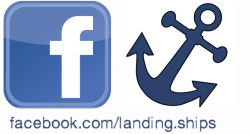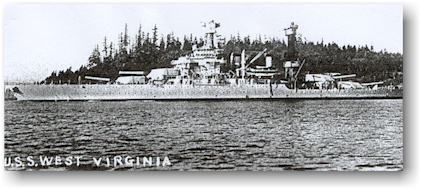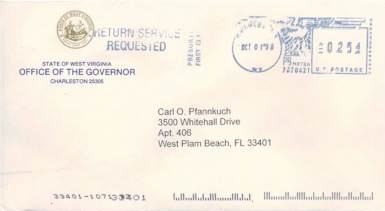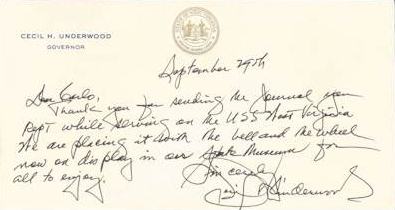
The writer and originator of this website, prior to enlisting in the US Coast Guard, served 6 years in the USN.
It was in the depths of the depression in 1934, when grown men with many capabilities couldnít find work, that Carl O. Pfannkuch, then 17, decided to enlist in the navy. Upon approaching the navy recruitment office in New Haven, Connecticut, he found no enlistments for that month were to be made. Using political pressure from the then Senator Mahoney, he obtained an enlistment quota from only 54 for the month from that state.
As his first assignment after boot camp (Norfolk Va., the only one open then) he was assigned to the deck force, on the battleship USS West Virginia, picture attached. This was the newest battleship afloat at that time BB48. While serving as mess cook for 5 months (his selection) he was able to go to the radio practice room, and learn the Morse code.
When the captain of the ship heard of this, he had him designated a radio striker. From that point on, his whole career in the navy and coast guard was directed to radio. Despite few advancements in ratings through-out the navy Carl advanced to RM3C, and stayed aboard the WeeVEE for over 2 years. Accumulating ships papers for 1935 and 1936, that 60 years later were requested by the Governor of the State of West Virginia, and now reside alongside, the West Virginiaís ships wheel and ship's bell (the only things remaining after decommissioning.
After over 3 years of constant sea duty aboard the battleship, he was transferred to the 15th naval District (Panama). During this time, he became indoctrinated into commercial ships radio traffic (due to the canal zone restrictions). He became efficient in this different mode of traffic, which was at the end of WW2 to become helpful as a CRM at the USCG Leased Radio Station In Southampton, L.I., NY.
After serving 2 years in Panama, he volunteered for duty aboard a newly established Neutrality Patrol, working out of the Torpedo Station at the Naval War College in Newport RI. Serving as a flag radioman, on the staff of a newly re-constituted rank of Commodore
These were old 4 stacker destroyers. Forced draft engine rooms, horrible living conditions, bad sea-duty, little comforts. As a force to deter German Submarines from landing on our shores (which some did) and steaming out to pick up British convoys coming in for re-provisioning of the war materials Britain needed, they filled a need.
Because we hadnít entered into the war in Europe, congress had not declared a state of emergency, Carl was paid off in July of 1940, to return to civilian life.
But that was to end soon, when Japan attacked Pearl Harbor, and Carl entered in the USCG.
From there, he was ordered to LST duty at Little Creek, Virginia, and his duty aboard the LST 327 began.
From battlewagons, radio stations in Panama, 4 stacker destroyers, winding up on a thing called a LST was a let-down, but it was something never to forget.
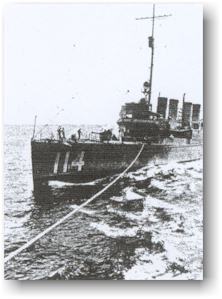
A four stack destroyer being re-fueled underway. Note the small beam that caused these vessels to roll in a heavy sea.
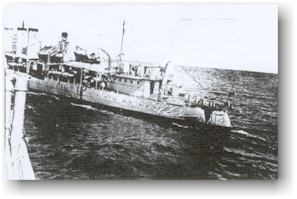
After section, topside was the head and showers for the crew. Directly below were the crew quarters.
Postscript: This Website, is being furnished by the Radio Gang of the LST 327, all still alive!
Landingship.com © 2005-2025 Site by Dropbears
